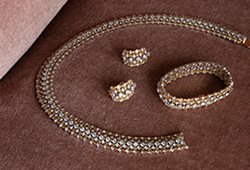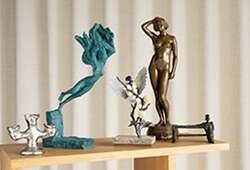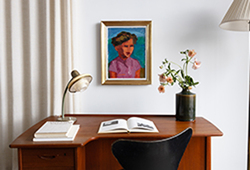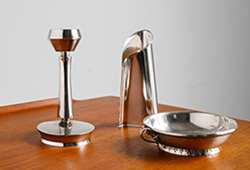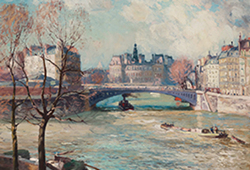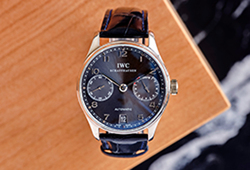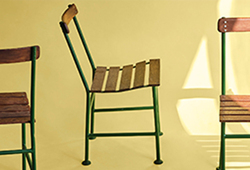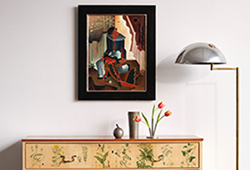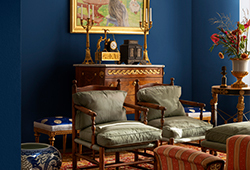Skåp, två stycken, hardwood. Kina, Qingdynastin, 1800-tal.
Varje monterskåp med en överdel som är indelad i olika stora fack inramat av en genombruten kant. Allt ovan dubbla lådor och paret dörrar med rikt skuren dekor med motiv av lotusblommor, körsbärsblom, antikviteter och dyrbara ting. Beslag och låsplattor i mässing. Längd 78 cm, djup 31 cm, höjd 156,5 cm.
Skador, lister saknas.
Proveniens
From the Collection of Gustaf Wallenberg (1863-1939). Gustaf Wallenberg was Swedish business man, diplomat and active politician. He was the son of André Oscar Wallenberg, founder of Stockholm Enskilda Bank (today SEB, and grandfather of Raoul Wallenberg (1912-47?). After a career in the Swedish Navy he turned to the business world and was very active in striving to better the transoceanic shipping industry. Something that came in handy when he in 1908 successfully negotiated with the Qing court in Beijing about a friendship, trade and navigation treaty. The collection was acquired between 1906 and 1918 when Wallenberg was the Swedish Envoyé in Tokyo. From 1907 he was also accredited for Beijing and came to spend time in both countries as the Swedish Ambassador. Mr Wallenberg came to be in China in dramatic part of its history, when a lot of items came on the market and when the golden era of collecting Chinese works of art started in Europe. Thence by descent.
Utställningar
Bukowskis sold a part of this collection previously at Bukowskis Sale 554 in 2009 and Bukowskis Sale 556, 2010.
Litteratur
The display cabinets are known as "Duobao ge" or "multiple treasure cabinets". The Imperial Household Department archives mentions the use and popularity of this kind of furniture.
Display cabinets such as the present lot, known in Chinese literally as 'multiple treasure cabinets' (Duobao ge), or 'extensive antiques cabinet' (Bogu jia) are one of the most representative types of cabinets in the Qing dynasty that could serve the function of displaying antiques, storing books, scrolls or treasures; hence the name 'extensive antiques cabinet'. This was a high-end piece of furniture that was popular among the elites such as the literati, Court nobles and the emperor himself. In terms of their form, Duobao ge display cabinets developed from the Liang'ge gui cabinets (sometimes commonly known as 'Wanli cabinets') of the Ming dynasty. The basic form is that the lower sections have a pair of opening cabinet doors, the middle sections are set with drawers and the upper parts are composed of horizontal and vertical posts forming shelves of various sizes and shapes.
Övrig information
The black and white images are from Temple Court, the Wallenberg residence in Japan.





